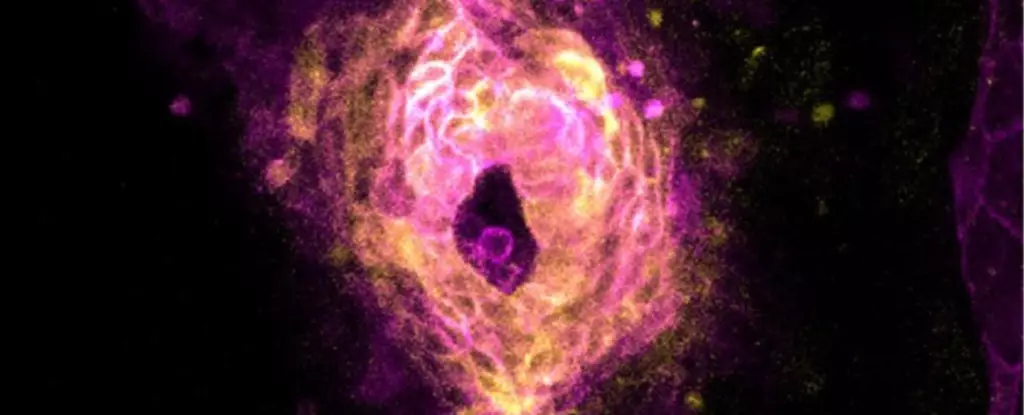In a remarkable display of life’s fleeting moments, scientists have captured the precise instant when a zebrafish’s heart starts beating. Despite the brevity of a zebrafish’s life, the emergence of their developing hearts from a cluster of single cells is a sight to behold. Harvard University biophysicist Adam Cohen, the senior author of this groundbreaking study, describes the experience as if someone had suddenly flipped a switch, igniting the beating heart. Through the use of custom-made agarose molds and high-speed microscope imaging, Cohen and his team paved the way for a deeper understanding of heart development in zebrafish embryos.
Building upon decades-old research on the first heartbeats in other species like chickens, rats, and mice, the Harvard University researchers set out to explore the elusive moment when heart cells spring into action. Prior studies revealed that the first heartbeat occurs even before the formation of the initial heart structure, known as a primitive tube. The continuous rise and fall of calcium ions within the heart muscle cells, also called cardiomyocytes, was the first indication of activity, albeit in an unorganized manner. In fully mature hearts, the flow of calcium ions generates electrical activity, triggering contractions that sustain life.
Through meticulous observation, lead researcher Bill Jia and his team discovered that slow and sparse calcium waves gradually grew in size and frequency as the cardiomyocytes arranged themselves into a ring shape within the zebrafish embryos. Suddenly, the calcium levels spiked, initiating bursts of electrical activity that swept through the tissue. The initial heartbeats exhibited slight irregularities before settling into synchronized contractions. Remarkably, the researchers observed that this rhythmic and spatially structured beat emerged before the heart connected to the circulatory system and began pumping blood. The team also noted that the zebrafish heart cells entered an excitable state approximately 90 minutes before the first heartbeat, preparing themselves for action.
An intriguing aspect of this research was the varying locations where the surging waves of calcium ions originated in different zebrafish embryos. This finding suggests that the cells firing first are not inherently unique. The locus of initiation primarily occurred in the central region of the cardiac ring, rather than the outer edges where the pacemaker cells reside in adult hearts. The researchers believe that the early activity in heart cells, prior to the first contraction, might contribute to cardiovascular development. Furthermore, the similarities between zebrafish and other vertebrates, such as chicks, rats, and mice, imply that the mechanisms underlying heart formation could be shared among all backboned animals, including humans. This discovery opens up exciting avenues for future research into understanding cardiac irregularities like arrhythmias in humans.
The study’s findings provide valuable insights into the early stages of heart development and could have significant implications for medical advancements in the future. Understanding the intricate processes that drive heart formation in zebrafish embryos might help researchers uncover potential treatments for congenital heart defects and other cardiovascular conditions. Additionally, the shared mechanisms between species offer hope for uncovering universal principles of heart development, potentially improving diagnostic and therapeutic approaches for various heart disorders in humans.
Witnessing the first beats of a zebrafish’s heart is a testament to the intricacy and wonder of life’s journey. From a collection of single cells to synchronized contractions, the development of a functioning heart is a captivating spectacle. Through their innovative techniques and rigorous analysis, the Harvard University researchers have shed light on the early stages of heart formation in zebrafish embryos. This knowledge provides a solid foundation for further investigations into the mysteries of the human heart and offers hope for medical breakthroughs that could save countless lives.


Leave a Reply